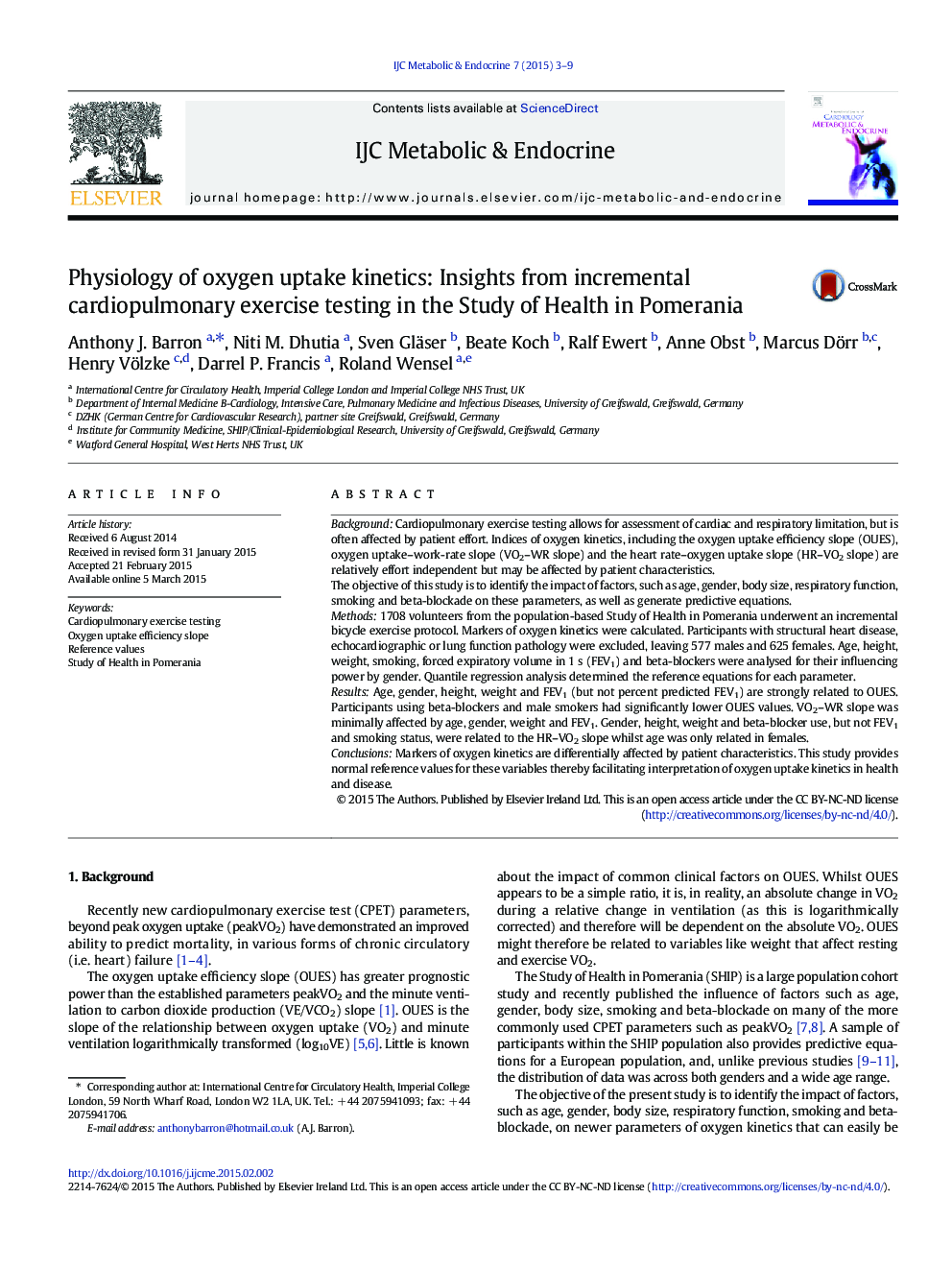| Article ID | Journal | Published Year | Pages | File Type |
|---|---|---|---|---|
| 2927217 | IJC Metabolic & Endocrine | 2015 | 7 Pages |
BackgroundCardiopulmonary exercise testing allows for assessment of cardiac and respiratory limitation, but is often affected by patient effort. Indices of oxygen kinetics, including the oxygen uptake efficiency slope (OUES), oxygen uptake–work-rate slope (VO2–WR slope) and the heart rate–oxygen uptake slope (HR–VO2 slope) are relatively effort independent but may be affected by patient characteristics.The objective of this study is to identify the impact of factors, such as age, gender, body size, respiratory function, smoking and beta-blockade on these parameters, as well as generate predictive equations.Methods1708 volunteers from the population-based Study of Health in Pomerania underwent an incremental bicycle exercise protocol. Markers of oxygen kinetics were calculated. Participants with structural heart disease, echocardiographic or lung function pathology were excluded, leaving 577 males and 625 females. Age, height, weight, smoking, forced expiratory volume in 1 s (FEV1) and beta-blockers were analysed for their influencing power by gender. Quantile regression analysis determined the reference equations for each parameter.ResultsAge, gender, height, weight and FEV1 (but not percent predicted FEV1) are strongly related to OUES. Participants using beta-blockers and male smokers had significantly lower OUES values. VO2–WR slope was minimally affected by age, gender, weight and FEV1. Gender, height, weight and beta-blocker use, but not FEV1 and smoking status, were related to the HR–VO2 slope whilst age was only related in females.ConclusionsMarkers of oxygen kinetics are differentially affected by patient characteristics. This study provides normal reference values for these variables thereby facilitating interpretation of oxygen uptake kinetics in health and disease.
